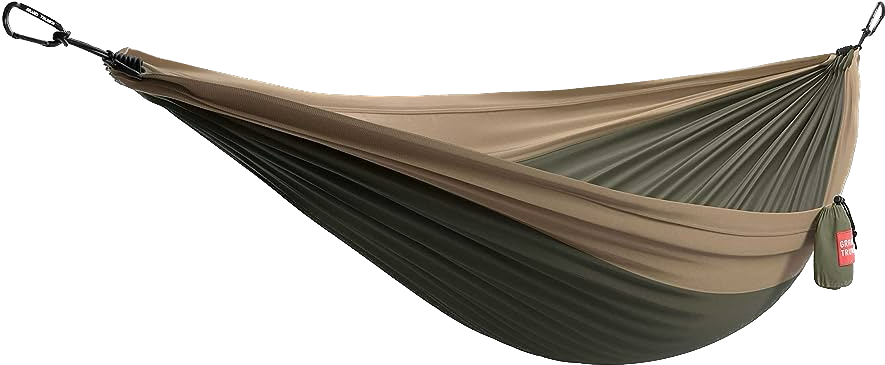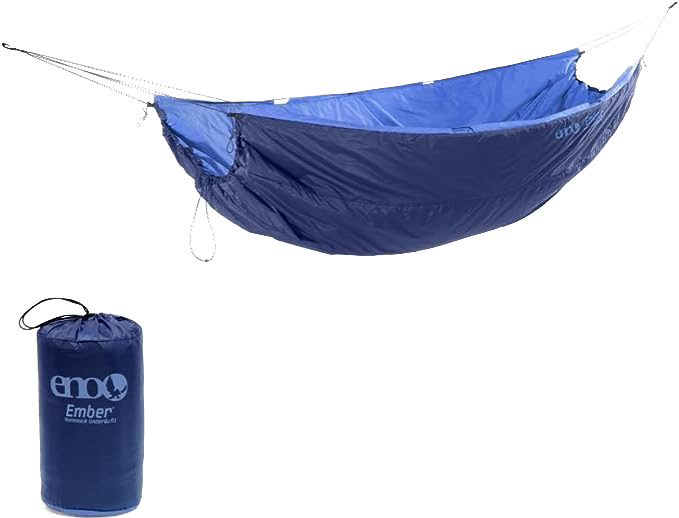Are you tired of laying in your hammock and feeling like you’re sinking into the ground? Does your hammock sag and lose its shape, making it uncomfortable and even dangerous to use? If so, you’re not alone. Many hammock users experience sagging, but fear not – there are several easy and effective ways to fix it.
In this blog, we will discuss how to fix a sagging hammock and provide some tips and techniques to help you out. With a little effort and the right approach, you can eliminate sagging and enjoy your hammock once again. Let’s get started!
How to Fix a Sagging Hammock
If you have a sagging hammock, fear not! There are several easy and effective ways to fix it and get your hammock back to its original, comfortable state. Here are some tips to help you out:
- Adjust the hanging height of your hammock. The higher you hang your hammock, the tighter it will be and the less sagging you will experience. Make sure to hang your hammock at a height that is comfortable for you to get in and out of, but high enough to provide the necessary tension.
- Adjust the length of the ropes or chains that you use to hang your hammock. Depending on the type of hammock you have, you may be able to adjust the length of the ropes or chains to create more tension and eliminate sagging.
- Use a hammock stand. If you don’t have trees or other sturdy structures to hang your hammock from, consider using a hammock stand. These stands provide a stable base for your hammock and allow you to adjust the tension easily.
- Add additional support ropes or chains. If your hammock is still sagging despite adjusting the height and length of the ropes or chains, you can add additional support ropes or chains to help distribute the weight more evenly and create more tension.
- Use a hammock spreader bar. Adding a spreader bar to your hammock can help distribute the weight more evenly and create more tension, which can eliminate sagging.
- Tighten the knots at the ends of the ropes or chains. Loose knots can cause sagging, so make sure to tighten them up to create more tension.
Ultimately, fixing a sagging hammock is not difficult and can be done quickly with the right techniques. By adjusting the hanging height, and length of the ropes or chains, and adding additional support, you can eliminate sagging and get your hammock back to its original, comfortable state. With a little effort and the right approach, you can enjoy your hammock once again and relax in comfort.
How to tell if your hammock is sagging?
A sagging hammock can be frustrating and uncomfortable, but how can you tell if yours is starting to sag? Here are a few signs to look out for:
- The hammock feels less comfortable. If your hammock used to be nice and snug but now feels loose and saggy, this is a sure sign that it is starting to sag. A hammock should be taut and supportive, so if you feel like you’re sinking into it, this is a sign that it is losing its shape.
- The hammock looks saggy. Another telltale sign of a sagging hammock is its appearance. A hammock that is stretched out and saggy will have visible wrinkles or creases in the material. You may also notice that the hammock’s corners are drooping or that it is starting to take on a curved shape.
- The hammock is difficult to get into. If your hammock is sagging, it may be harder to get into and out of than it used to be. This is because a sagging hammock will be lower to the ground, making it more difficult to climb into and out of. You may also find that the hammock is less stable, causing you to feel wobbly or off-balance.
- The hammock is difficult to adjust. If you are having trouble adjusting your hammock, such as getting it to the right level of tautness, this can also be a sign that it is sagging. A sagging hammock will be harder to adjust, as the material will be less responsive to tightening.
If you notice any of these signs, it’s time to take action to prevent your hammock from sagging further. One option is to tighten the hammock’s suspension, using the ropes or straps that hold it in place. This can help to restore some of the hammock’s tension and support. Another option is to use a hammock stand, which can help to support the hammock and prevent it from sagging. This will prevent further sagging and restore the hammock’s shape and support.
Why Do Hammocks Stretch?
Hammocks are a popular outdoor leisure item, prized for their ability to provide a comfortable and relaxing place to rest. However, over time, some hammocks may begin to stretch or become less comfortable to use. There are several reasons why this may happen.
One reason why hammocks may stretch over time is due to the material they are made from. Most hammocks are made from a type of fabric called nylon, which is a synthetic polymer known for its strength and elasticity. However, nylon is not immune to wear and tear, and repeated use can cause the material to stretch and lose its shape. This can lead to a hammock that is less supportive and comfortable to use.
Another reason why hammocks may become less comfortable over time is the way they are anchored. Hammocks are typically suspended between two points, such as trees or posts, using ropes or straps. These ropes or straps can stretch over time, which can cause the hammock to sag in the middle. This can make it less comfortable to lie in and can also cause the hammock to move or sway excessively.
In addition, the weight and size of the user can also affect the comfort of a hammock. If a hammock is designed for a smaller person but is used by someone larger, the added weight can cause the hammock to stretch and lose its shape. This can lead to a less comfortable experience and can also put extra strain on the ropes or straps, potentially causing them to break. Hammocks, like most other things, wear down and need to be replaced. You can learn more in our article about how long hammocks typically last.
To help prolong the life of your hammock, you should be doing regular cleaning and maintenance. While your hammock will eventually stretch, it’s still worth taking the extra time to care for your hammock as it could extend its life years.
Key Things To Consider When Hanging Your Hammock
When hanging a hammock, it is important to consider several factors to ensure that it does not improperly stretch or become uncomfortable. Improperly hanging a hammock can lead to a less comfortable experience and can even be dangerous if the hammock breaks or falls. To avoid these problems, there are several things to consider when hanging your hammock.
- The first thing to consider is the type of hammock you are using. Different types of hammocks are designed to be hung in different ways, and it is important to follow the manufacturer’s instructions to ensure that the hammock is properly supported. For example, some hammocks are designed to be hung between two trees, while others are designed to be hung from a single point. It is important to choose the right type of hammock for your needs and to hang it according to the manufacturer’s instructions.
- The second thing to consider is the quality of the ropes or straps used to hang the hammock. It is important to choose ropes or straps that are strong enough to support the weight of the user and that are in good condition. Ropes or straps that are worn or damaged can break under the weight of the user, leading to a dangerous situation. It is also important to ensure that the ropes or straps are properly secured to the hammock and to the trees or posts used to support it.
- The third thing to consider is the weight and size of the user. It is important to choose a hammock that is appropriate for the weight and size of the person who will be using it. Using a hammock that is too small or too large can cause the hammock to stretch or sag, leading to a less comfortable experience. It is also important to ensure that the hammock is hung at the proper height to support the user properly.
In conclusion, there are several things to consider when hanging a hammock to ensure that it does not improperly stretch or become uncomfortable to use. Choosing the right type of hammock, using high-quality ropes or straps, and considering the weight and size of the user are all important factors to consider. By following these tips, you can enjoy a comfortable and safe experience in your hammock.



 Hello there, we're Vira Outdoors!
Hello there, we're Vira Outdoors!

